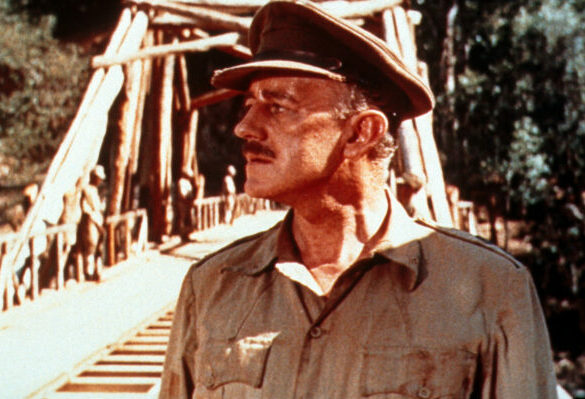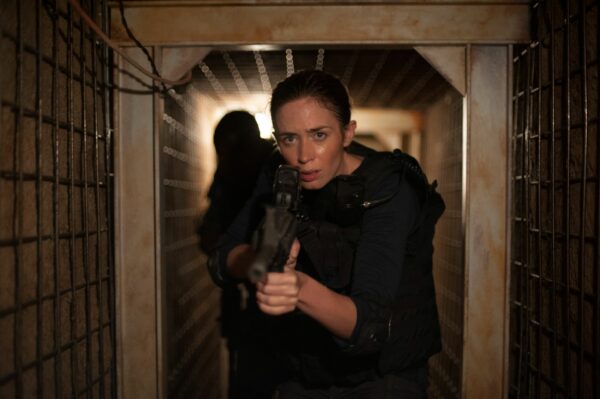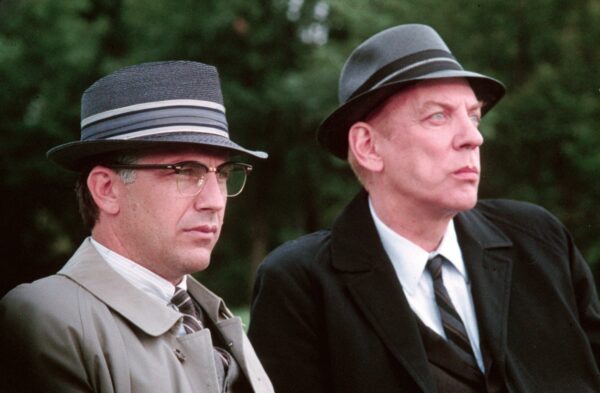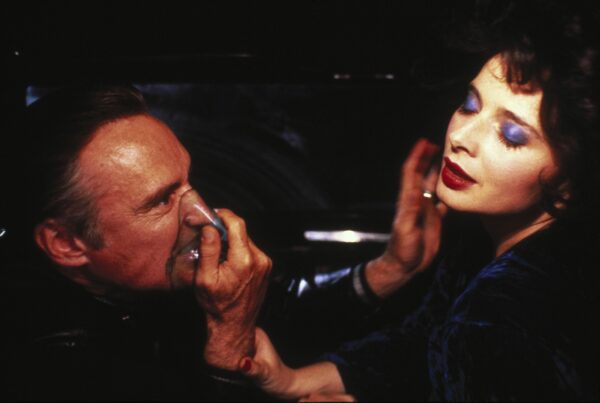
Midsommar opened in 2019 and has quietly forged a reputation as a modern folk horror classic. By way of 15 fascinating facts, we have the story from behind the scenes.
Coming on the back of his hit debut feature a year earlier, Ari Aster’s Midsommar was released in 2019 to become an almost instant cult classic. A folk horror with influences as disparate as The Wicker Man (1973) and Norse mythology, the film is the story of a group of teenage students who, one summer, visit a Swedish festival, with horrific results.
We’re telling the story behind the scenes of the film, with 15 enormous facts about Midsommar.
1. Ari Aster wears his influences on his sleeve
The writer and director of Midsommar, Ari Aster is a student of horror cinema, and pulls from that knowledge in Midsommar.
As the group enter the commune, we are shown some overhead shots very reminiscent of the opening of Stanley Kubrick’s The Shining (1980). There are other clear Stanley Kubrick influences too where Aster employs lots of slow zooms and static shots; the distinctive pattern seen on the Overlook Hotel carpet in The Shining even shows up at one point.
Aster himself has cited the Technicolor Black Narcissus (1947) as an inspiration on the look of Midsommar.
The opening to The Shining, a visual influence on Midsommar
2. Aster tells us the story of the film in the first shot
The first thing we see is in the film is a shot of a mural illustration. The illustration stays on screen for about 20 seconds and tells the story of the film we’re about to watch.
It shows the death of Dani’s family, then the grief and mourning she goes through, the trip away with friends she takes, the community cult that she comes across, and the final ritual to make her the may queen.
There’s and ominous-looking drawing of a bear on there too.
The opening shot of Midsommar
3. The film has an astonishing attention to detail
From that opening, Ari Aster runs other visual motifs throughout the film. Dani’s sister kills herself at the start of the movie; we see a shot of her wearing the makeshift gas mask she’s fashioned. Aster uses that shot throughout the film. Firstly, Dani sees it in a mirror. And once we arrive in Hårga, there’s a shot where we see Dani’s sister’s face superimposed over trees.
Our episode of The Cutting Room on Midsommar
4. The cultists have their own language
The cult in the film are called the Harga. They’re fictional, but Ari Aster did his research and created a lot of detail to make them as believable and realistic as possible. The Harga have their own language in symbols and runes which they call Elder Futhark and Younger Futhark. Each major Harga character has their own symbol, and you can see it on their costumes. Dani’s frock (once she is converted) has an R symbol. Christian’s robe has an up pointing arrow. And in the brutal scene where the two elders jump off the cliff, they rub their bloody hands on a rune stone, and the symbols they cover in blood are the R and the arrow.

The symbol on Dani’s costume
5. Ari Aster did a lot of research
It probably shows in the film that, while the Harga are a fictional creation by Ari Aster, a lot of research into real life cults, rituals, and folklore was carried out. Before writing the screenplay, Aster spent months researching Scandinavian folklore. We see a lot of that in the film:
- Midsummer is a real annual event in Sweden – a national holiday. It’s very different to what we see in the film, though, obviously.
- Picking flowers while walking backwards is a real custom.
- As is dancing round a maypole. We see both of those things in the film.
Midsummer, the real event in Sweden
6. Harga was named for a specific reason
The name of the town in Midsommar is Harga, which is a real Swedish town. Aster used that name because of a folk song called Hargalaten where the Devil disguised himself as a fiddler and led every teenager up a mountain, where he danced them all to death.
Hargalaten, the Swedish folk song that inspired Ari Aster
7. The costumes were painstakingly designed
The costume designer on the film was Andrea Flesch. She said working on the film was a real challenge because the costumes weren’t based on anything. Ari Aster had an idea how he wanted them to look and described it to Andrea Flesch.
Another ice detail is how the clothes Dani wears reflect her character arc. Most of the film, she wears baggy, ill-fitting clothes, representing the dark, out-of-place situation she’s in. The first time she wears something that actually fits is the first time she wears the dress made by the Harga. We’re being told visually that this is where she belongs.
8. The Harga’s most brutal practice came from Ari Aster’s research
One of the most memorable – and graphic – parts of the film is the sequence where we see two elder Harga jump to their deaths from a cliff. We mentioned above that parts of the festival are taken from real life, and this cliff jumping ceremony is too.
There was a practice in Norse mythology called Attestupa. This was where, in certain cultures, the elderly were expected to sacrifice themselves for the good of the village when they were no longer able to support themselves. And they were often killed by being hurled from cliffs.

Christian and Dani witness the Attestupa death jumps
9. A death scene was originally even more graphic
The Attestupa sequence isn’t the only death in the movie that came from Ari Aster’s research. At the end of the film, Christian discovers Simon hanging in a barn, unconscious. He has been spreadeagled, his back cut open and his lungs pulled out to appear like wings.
This comes from Old Norse poetry and is a ritual called the Blood Eagle. Victims would be laid on their fronts, their ribs would be severed from the spine and their lungs then pulled out through the opening to create a pair of wings.
In the original script for Midsommar, Simon was hung by his Achilles and had horseshoes nailed to his feet. And Christian found Josh in the barn, too, with his guts hanging out.
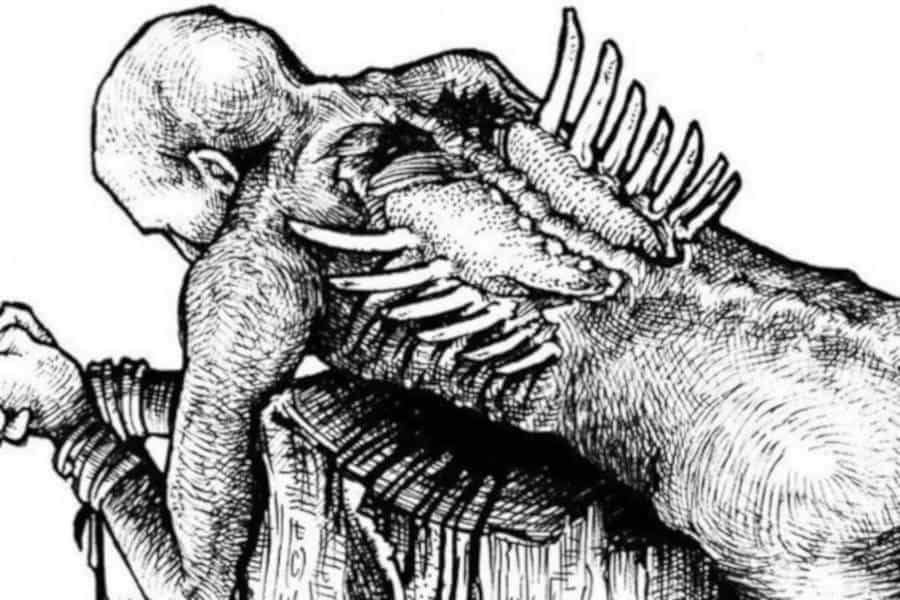
A depiction of the Blood Eagle
10. The film’s climax is foreshadowed earlier in the film
The film starts in New York, with the group planning their trip to Sweden. Ari Aster foreshadows what is to come very subtly. In the shot of Dani’s parents in bed, we see that on the bedside table there’s a photograph of Dani. Above that there’s a bunch of flowers, which looks like the crown she wears at the end of the movie as the May Queen.
Dani’s ‘crown’ in the first act of the film
11. The bear is foreshadowed too
Also, in Harga, when Christian is waiting to talk to Siv, one of the leaders, there’s a picture of a bear on fire on the wall. This is naturally a set up for the pretty gruesome ending.
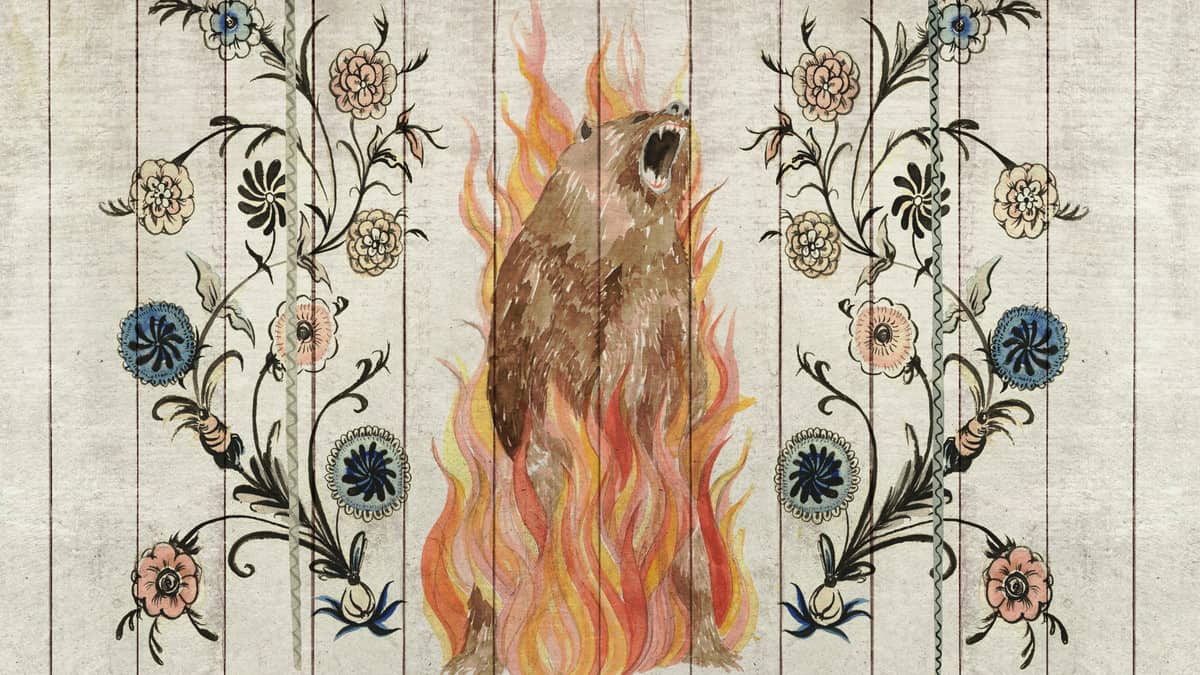
The image Christian sees on the wall
12. Mark’s fate is earmarked early on
And, earlier still, we see the Harga playing a game called “skin the fool.” Then when Mark is killed, one of the Harga wears his face as a mask. And when we see his corpse at the end of the film, it’s wearing a jester’s hat. So they did skin the fool.

The mask made from Mark’s face
13. The number 9 keeps popping up
The number 9 is a recurring theme in the film. Pelle explains to Dani about how the lifecycle of Harga people is based on the four seasons. The age each season ends at is a multiple of 9. And The festival is celebrated every 90 years. This is because 9 has been a significant number in myths around Odin, the Norse God, who hung upside down for 9 days so the world would gain knowledge.
14. The Wizard of Oz was an inspiration
In one of the New York apartment scenes, we see a picture of the Scarecrow from the Wizard of Oz (1939). And at the end of the film we see the friends’ corpses stuffed with straw.
Furthermore, in Christian’s apartment he has a painting by a Swedish artist called John Bauer called “Poor Little Bear” which shows a girl in a crown, with a bear – both images we see at the end of the film.
15. The film was a modest hit
Made on a low budget of just $9m, Midsommar was a big success, recouping 5x its budget in $48m. It received a lot of critical praise too, and today holds a rating of 83% on Rotten Tomatoes. With an audience rating of 63%, it seems the film isn’t for everyone and is perhaps destines to become a cult horror classic.
The beginning of a beautiful friendship
Stay up-to-date with all things All The Right Movies by signing up for our e-newsletter.


















